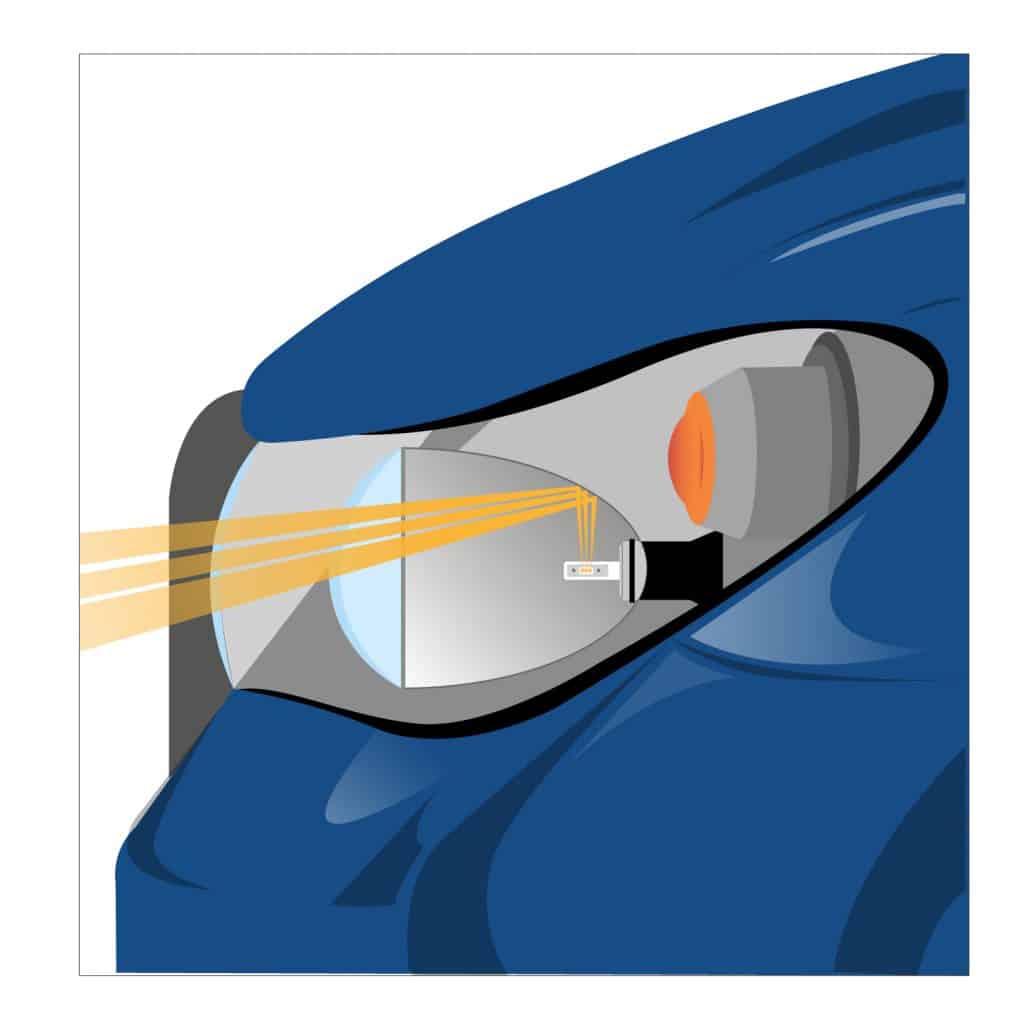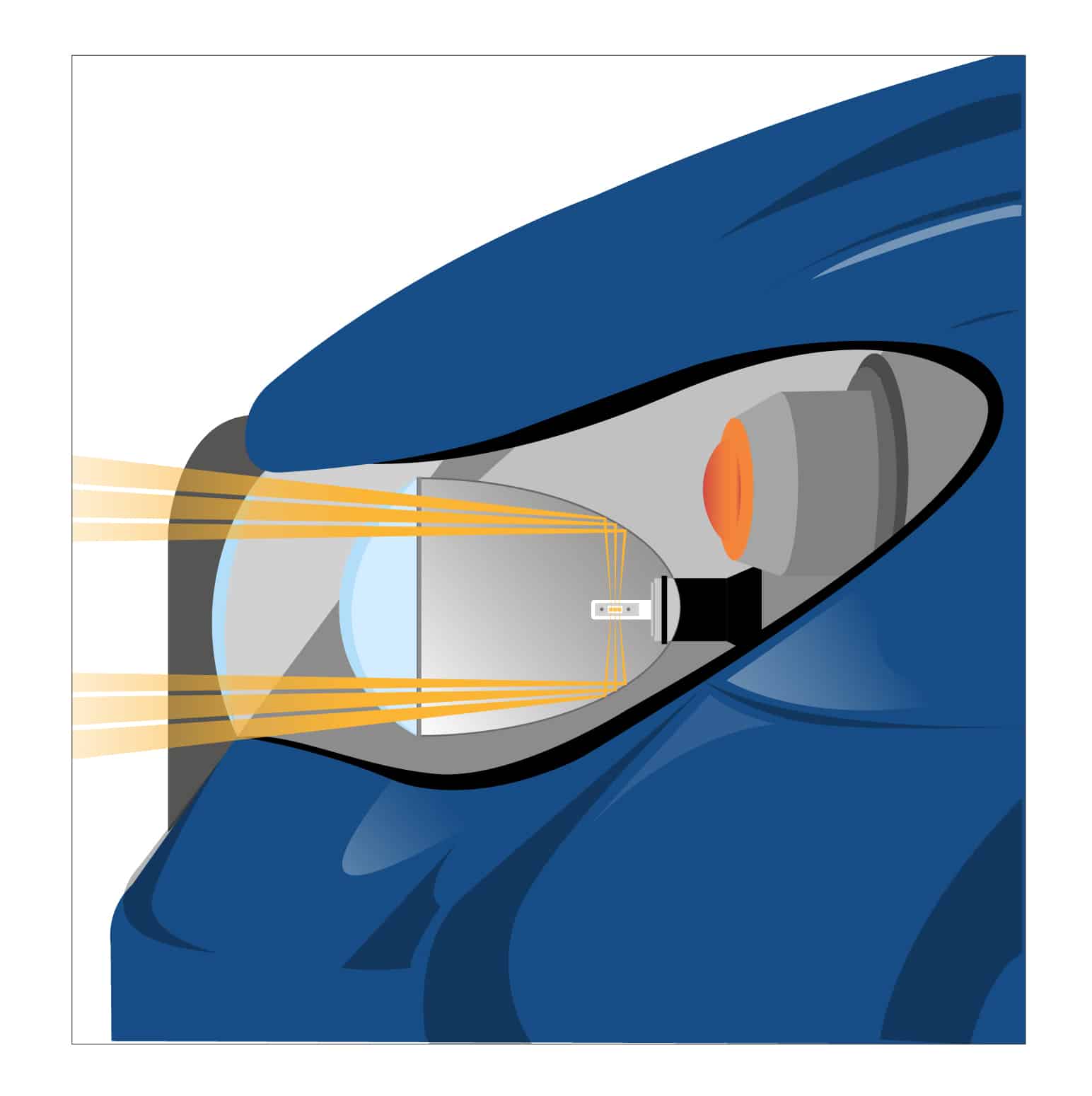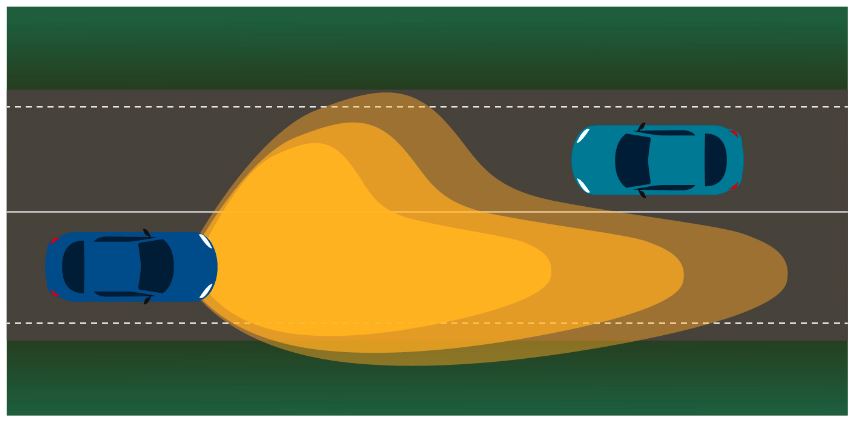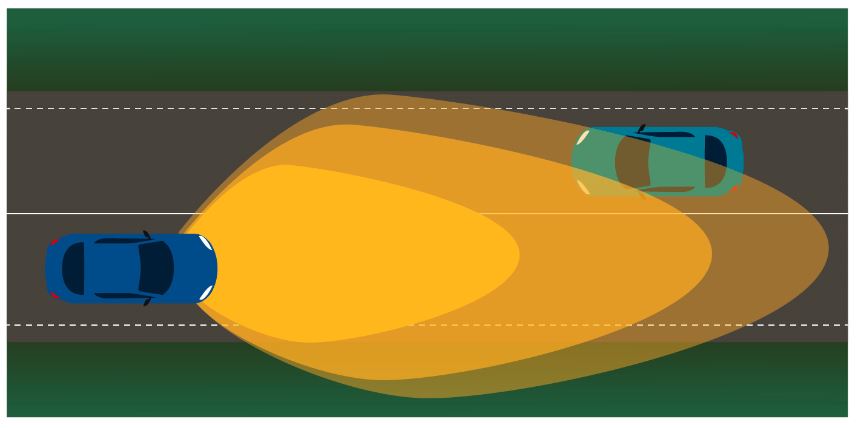With all the various lights in the front of the car’s body, I don’t blame you for wanting to know more about their differences. Let’s start with the basics.
High beam and low beam are two different beams of light, with 2 distinct functions. In most cars, each beam has a separate, single-beam bulb for producing the light. In other cases, one bulb, with a dual-filament, can produce both the low and high beams through a single bulb.
Low vs High Beam Headlights: Key Differences
Both headlights are mandatory lights on the front of your car.
In everyday driving, you would use the low beam for regular night-time driving. Whereas the high beam only needs to be on when it is especially dark city areas with no street lighting.
Here I’d like to point out something specific to cars that use two different bulbs for low and high beams and cars that use a dual-filament bulb.
Basically, for vehicles with 2 different bulbs, when you turn on your high beam, your low beam continues to be on as well.
Therefore, the low beams are on at all times when your headlight is turned on, and the high beam comes on and off as per your requirement.
On the other hand, cars that use a single bulb but two different filaments (dual-filament) switch between low and high beams. This is for heat management. Since a headlight assembly is rated for a specific upper limit of temperature, only one filament turns on at a time.
Both lamps usually operate at about 55 W. Still, the low beam tends to be slightly dimmer than the high beams, for apparent reasons.
The idea of a bright but dipped beam is to adequately illuminate the road in front of the car, say up to 5 cars ahead of you.
At the same time, this filament is housed in a way that prevents the low beam headlights from shining directly in the eyes of incoming cars and people.
A high beam headlight ignores all such limitations and shines brightly straight ahead to provide vital and life-saving illumination!
Take a look at how the filaments work when low and high beam lights are in the same bulb (dual-beam headlights).
Here is the same headlight. However, this is how the light is spread with a high beam.
As you can see, the low beam is projected downwards onto the road, while the high beams shine straight ahead.
Another difference is in the light projection. The image below indicates how low beams shine.
And below is another example that shows how high beams shine. They shine evenly and widely, further down the road compared to low beams.
And as you can see, low beams shine further on the side you are driving on and shorter on the side of oncoming traffic. This again increases your and other’s safety while driving.
This is also why it is so important to turn your high beams off when you see the oncoming vehicle as high beams reach another side of the road.
Next, I have made a convenient table for you to take a quick look at the differences between low beam and high beam headlights.
| Low Beam Headlights | High Beam Headlights |
|---|---|
| Emits a low beam, dipped beam at a downward angle | Emits a high-beam straight ahead |
| Used as daily running lights driving on main city roads and busy highways | High beam is not used all the time, but used mainly on open freeways and dark rural roads |
| The low beam is shorter range and adequate for illuminating the road closer to the car | A high beam light is very bright, front-facing and longer-range |
| Low Beam outputs a maximum of 1380 lumens | High beam outputs a maximum of 1410 lumens |
| Low beam headlights light up a distance between 150-200 feet in front of the car | High-beam headlights light up to 250-350 feet ahead of the car |
| Low beam headlights could run either on 12 V or 6 V, using between 45- 55 Watts | A high beam usually runs on 12 V, and uses a 55 Watt bulb, with an upper limit of 65 Watt |
When Are High And Low Beams Headlights Used?
Are you wondering when you should be using these two headlights?
As you already know, high beams are meant to provide maximum visibility but can blind oncoming traffic and cars in front of you through their rearview mirror.
So the best place to use high beams is wide, open highways or dark, uninhabited roads where there are no other cars around.
Sometimes, a high beam is used to communicate with another driver, such as flashing it once or twice to indicate another driver to pass.
Low beams are used for regular night-time driving, and by law, need to be on between dusk and dawn.
But what about when visibility is low due to rain, fog, snow, or dust? You may think you should use high beams at that point.
Related: Can You Use LED Headlights In Reflector Housing?
It is not correct to use high beams during low-visibility conditions. This is because the straight-ahead high beam will shine on and reflect from all the particles of rain/dust/snow in the air and create an opaque wall in front of you!
You will not be able to see anything, and neither will the drivers around you.
In this weather, the best thing is to turn on your fog lights. If you don’t have those, stick to your low beams. While they are also not ideal and will similarly reflect light back into your eyes, low beams will still be better than high beams.
Can Low and High Beams Be In The Same Bulb?
Based on the differences from the first section LB and HB talk about whether these can be incorporated into the same bulb.
While most cars use two separate bulbs on each side, making up 4 bulbs for the frontal headlights, newer cars use a single bulb.
A single bulb can provide both low and high beams’ dual function by using a dual-filament lamp.
When the regular dipped beam needs to be on, then the filament at the top turns on, shines upwards into the projector or bulb reflector, then angles in downwards onto the road.
When high beams need to be on, then both filaments turn on and reflect straight outwards in a conical shape.
Also read: Do LED Bulbs Work In Projector Headlights?
Some examples of dual filament bulbs are H1, H4, 9004, 9007. These kinds of bulbs are usually more expensive than single beam bulbs.
It is worth noting that you cannot simply swap out your two single-beam bulbs and replace them with the one dual-beam headlight because the wiring is entirely different.
You can check the front of your car’s headlights to see which bulbs you have. If you see two bulbs on one side, you have single beam lights. If you see only one bulb, you have a dual-beam light.
If you have got dual-beam halogen lights, you can replace them with modern LED dual beam lights.
LED headlights are much brighter, so they increase your visibility on the road and illuminate the road in front of you more.
Check out high quality LED dual beam headlights on Lasfit.
Final Words
I always say, knowing the basics of your cars and electronics can save you from financial losses and unwanted results.
In fact, something as simple as knowing the difference between low and high beam lights can potentially save you money.
Have you been thinking of installing a dual-beam bulb in your car?
Did you know the best time to turn on your high beams?
Share your thoughts with me in the comments below.
Claim your 10% discount on the first order with Lasfit

- Replace your dim halogen headlights with bright LED
- LED lighting increases your visibility on the road during the day, and for you in the night
- Select LED lighting that is exactly designed for your car
- Buy with confidence having 45 days money back guarantee
Claim 10% off on your first order over $50, using the promo-code “FIRSTTIME10“!







